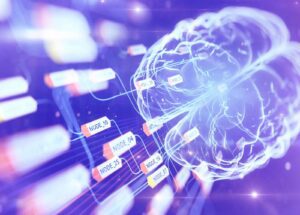What are the advantages and disadvantages of different data collection methods?

What is Data Collection?
Data collection is the procedure of collecting, measuring, and analyzing accurate insights for research using standard validated techniques.
Put simply, data collection is the process of gathering information for a specific purpose. It can be used to answer research questions, make informed business decisions, or improve products and services.
To collect data, we must first identify what information we need and how we will collect it. We can also evaluate a hypothesis based on collected data. In most cases, data collection is the primary and most important step for research. The approach to data collection is different for different fields of study, depending on the required information.
Collecting data helps your organization answer relevant questions, evaluate results, and better anticipate customer probabilities and future trends.
In this article you will learn what data collection is, what it is used for, the advantages and disadvantages it has, the skills or abilities that a professional requires to carry out correct data collection, the methods used and some tips to carry it out. cape.
What is data collection?
According to Dr. Luis Eduardo Falcón Morales, director of the Master’s Degree in Applied Artificial Intelligence at the Tecnológico de Monterrey, he explains to us that currently everything generates data in any format, whether written, by video, comments on social networks, tweets, etc. .
“The issue here is that then this data collection begins to collect information to try to find information about the processes on which these data are being generated,” said Falcón Morales.
So we can say that data collection is the process of searching, collecting and measuring data from different sources to obtain information about the processes, services and products of your company or business and to be able to evaluate these results so that you can make better decisions.
What is data collection used for?
Teacher Luis Eduardo indicated that data collection mainly serves to improve continuous improvement processes but it must be understood that it also depends to a large extent on the problem being attacked or the objective set for which said collection is being carried out.
Next, he gives us some uses of data collection:
- Identify business opportunities for your company, service or product.
- Analyze structured data (data that is in a standardized format, meets a defined structure, and is easily accessible to humans and programs) in a simple way to understand the context in which said data was generated.
- Analyze unstructured data (data sets, typically large collections of files, not stored in a structured database format, such as social media comments, tweets, videos, etc.) in a simple way to understand context in which said data were developed.
- Store data according to the characteristics of a specific audience to support the efforts of your marketing area.
- Better understand the behaviors of your clients, users and leads.
Data Collection Methods
There are many ways to collect information when doing research. The data collection methods that the researcher chooses will depend on the research question posed. Some data collection methods include surveys, interviews, tests, physiological evaluations, observations, reviews of existing records, and biological samples.
Phone vs. Online vs. In-Person Interviews
Essentially there are four choices for data collection – in-person interviews, mail, phone, and online. There are pros and cons to each of these modes.
- In-Person Interviews
- Pros: In-depth and a high degree of confidence in the data
- Cons: Time-consuming, expensive, and can be dismissed as anecdotal
- Mail Surveys
- Pros: Can reach anyone and everyone – no barrier
- Cons: Expensive, data collection errors, lag time
- Phone Surveys
- Pros: High degree of confidence in the data collected, reach almost anyone
- Cons: Expensive, cannot self-administer, need to hire an agency
- Web/Online Surveys
- Pros: Cheap, can self-administer, very low probability of data errors
- Cons: Not all your customers might have an email address/be on the internet, customers may be wary of divulging information online.
In-person interviews always are better, but the big drawback is the trap you might fall into if you don’t do them regularly. It is expensive to regularly conduct interviews and not conducting enough interviews might give you false positives. Validating your research is almost as important as designing and conducting it.
We’ve seen many instances where after the research is conducted – if the results do not match up with the “gut-feel” of upper management, it has been dismissed off as anecdotal and a “one-time” phenomenon. To avoid such traps, we strongly recommend that data-collection be done on an “ongoing and regular” basis.
This will help you compare and analyze the change in perceptions according to marketing for your products/services. The other issue here is sample size. To be confident with your research, you must interview enough people to weed out the fringe elements.
A couple of years ago there was a lot of discussion about online surveys and their statistical analysis plan. The fact that not every customer had internet connectivity was one of the main concerns.
Although some of the discussions are still valid, the reach of the internet as a means of communication has become vital in the majority of customer interactions. According to the US Census Bureau, the number of households with computers has doubled between 1997 and 2001.

Data Collection Examples
Data collection is an important aspect of research. Let’s consider an example of a mobile manufacturer, company X, which is launching a new product variant. To conduct research about features, price range, target market, competitor analysis, etc. data has to be collected from appropriate sources.
The marketing team can conduct various data collection activities such as online surveys or focus groups.
The survey should have all the right questions about features and pricing, such as “What are the top 3 features expected from an upcoming product?” or “How much are your likely to spend on this product?” or “Which competitors provide similar products?” etc.
For conducting a focus group, the marketing team should decide the participants and the mediator. The topic of discussion and objective behind conducting a focus group should be clarified beforehand to conduct a conclusive discussion.
Data collection methods are chosen depending on the available resources. For example, conducting questionnaires and surveys would require the least resources, while focus groups require moderately high resources.
Advantages and disadvantages of data collection
Falcón Morales pointed out that the main advantage, and the most important, is knowledge itself, because knowing is power in some way in your company, it is knowing what your customers [4] think is something negative or positive about your product, service or process.

However, he indicated that the main disadvantage is that people often think that “data collection is magic” and that is not the case. It is a process of continuous improvement, therefore it has no end.
“It is not I apply it once and that’s it, no, it is an endless cycle,” said the director of the Master’s Degree in Applied Artificial Intelligence.
The other disadvantage is the ethical question of the professional or the company to handle the data, “since we do not know what use they may give it.”
Skills to carry out data collection
The director of the Master’s Degree in Applied Artificial Intelligence explained that the main skills are soft skills. They are between them:
- Critical thinking
- Effective communication
- Proactive problem solving
- Intellectual curiosity
- Business sense
Methods for data collection
Data collection can be carried out through research methods, which are:
- Analytical method : this method reviews each data in depth and in an orderly manner; goes from the general to the particular to obtain conclusions.
- Synthetic method : here the information is analyzed and summarized; Through logical reasoning he arrives at new knowledge.
- Deductive method : this method starts from general knowledge to reach singular knowledge.
- Inductive method : from the analysis of particular data, general conclusions are reached.

Tips for carrying out data collection
Falcón Morales provided 5 tips to the professional to collect data:
- Make a plan with the objective to be solved.
- Gather all the data.
- Define the data architecture.
- Establish data governance.
- Maintain a secure data channel.
